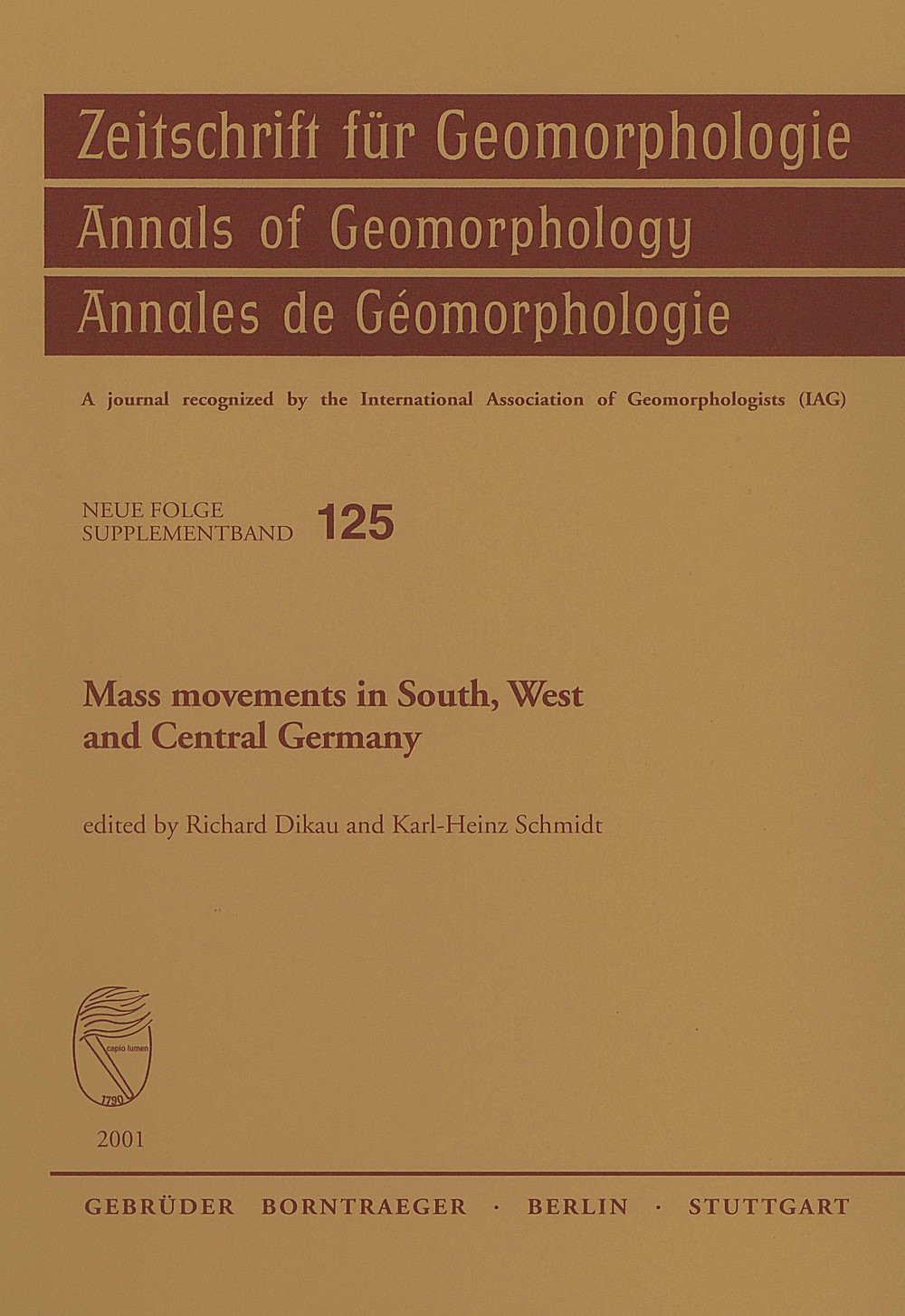Content Description
top ↑
This special issue contains results of the MABIS project (Mass
movements in South, West and Central Germany) which was funded by the
Deutsche Forschungsgemeinschaft (German Research Association). The
MABIS project with participants from five German universities ran from
1995 to 2001. It was the first project in Germany with a key focus on
geomorphic landslide research comparing different landslide prone
geological formations and different geomorphic landform types. The
project was an excellent opportunity for German geomorphologists to
collect widely distributed landslide data from different resources in
Germany, to start new data sampling activities, to apply and develop
new research methods, and to continue research in an important topic
related to natural hazard assessments. The working teams of the MABIS
project were made up by experienced geomorphologists and young masters
and PhD students. A high number of master and PhD theses has been
finished documenting highly motivated young researchers and research
objectives. The MABIS project framework and conception was developed
in close co-operation with European landslide research projects. The
European TESLEC project (The temporal stability and activity of
landslides in Europe with respect to climatic change) stimulated
significantly the basic conceptual framework of MABIS. This refers
especially to objective 2 of the TESLEG project with a major focus on
the reconstruction of past distribution of landslide incidence related
to the change of various climate parameters (Dikau & Schrott 1999,
Schrott & Pasuto 1999).
Dikau, R. & Schmidt, K.-H.: Mass movements in South, West and Central
Germany - objectives and main results of the MABIS project (with 1
figure and 2 tables) 1-12
Temporal activity of landslides in different time scales and in
different regions of Germany
Hardenbicker, U. & Grunert, J.: Temporal occurrence of mass movements in the
Bonn area (with 9 figures and 1 table) 13-24
Baum, I. & Schmidt, K.-H.: Temporal classification of mass movements
on the Wellenkalk-scarp in Thuringia and northern Hesse -
possibilities and limitations (with 4 figures and 5 tables) 25-41
Schmidt, K.-H. & Beyer, I.: Factors controlling mass movement
susceptibility on the Wellenkalk-scarp in Hesse and Thuringia (with 3
photos, 4 figures and 2 tables) 43-63
Glade, T., Kadereit, A. & Dikau, R.: Landslides at the Tertiary
escarpments in Rheinhessen, Southwest Germany (with 9 figures and 4
tables) 65-92
Bibus, E. & Terhorst, B.: Mass movements in Southwest
Germany. Analyses and Results from the Tübingen Work Group of the
MABIS Project (with 4 figures and 1 table) 93-103
Terhorst, B.: Mass movements of various ages on the Swabian Jurassic
escarpment: geomorphologic processes and their causes (with 9 figures
and 4 tables) 105-127
Landslide hazard assessments
Meißl, G.: Modelling the runout distances of rockfalls using a
geographic information system (with 2 figures) 129-137
Möller, R., Glade, T. & Dikau, R.: Application of Soil Mechanical
Response Units (SMRU) in regional landslide hazard assessment (with 4
figures and 2 tables) 139-151
Methodological approaches ire landslide analysis
Bibus, E., Kallinich, J. & Terhorst, B.: Dating methods for mass
movements studied by the MABIS Project (with 1 figure) 153-162
Gers, E., Florin, N., Gartner, H., Glade, T., Dikau, R. &
Schweingruber, F. H.: Application of shrubs for dendrogeomorphological
analysis to reconstruct spatial and temporal landslide movement
patterns - A preliminary study (with 2 photos, 7 figures and 2 tables) 163-175
Terhorst, B. & Kirschhausen, D.: Legends for mass movements in the
MABIS Project (with 6 figures and 1 table) 177-192
